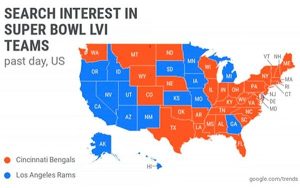In-App Fraud, Targeting Present Major Challenges For Holiday Season
The state of in-app fraud looks pretty grim for marketers. Companies are forecast to spend $77 billion on mobile in-app advertising this year, and about $26.5 billion will be lost to mobile in-app fraud.
The Forensiq estimates come from analyzing data across eight platforms and more than 100 million impressions to develop a benchmark for the industry to determine how it’s done and mitigate future threats.
Estimating the impact of invalid in-app traffic, analysts examined several data sources outside those it typically receives from its normal client list. The analysis was conducted during the second half of 2018, isolated and filtered traffic across NAM, LATAM, EMEA, and APAC. The traffic leaned heavily toward Android devices, but also included a significant amount of iOS.
It turns out as spend increases, so does fraud. About 17% of global mobile in-app traffic was fraudulent during the time Forensiq analysts conducted this survey.
Total in-app mobile fraud included 9% from bundle ID spoofing, 8% from device hijacking, and 6% from lesser used types of fraud tactics.
Forensiq identified a wide range of Bundle ID spoofing, including 6,631 apps that spoofed a well-known weather app; 5,054 apps that spoofed a large U.S. news app; and 4,695 apps that spoofed a popular fitness tracking app.
Then there were the 5,907 apps that opened a TV programming website; 9,057 apps that opened a large social network web site; and 6,018 apps that opened a popular news culture web site.
Device hijacking accounted for about 8% of total in-app traffic.
Fraud is only one issue that marketers now face when it comes to reaching consumers through apps. Once an app is installed, about 80% of users do not return to apps after installing them, according to data from YouAppi, which suggests this could become a challenge for marketers as consumers begin their holiday season shopping.
Data from YouAppi that analyzed shopping app retargeting from fourth-quarter 2018 shows that holiday ecommerce app campaigns generated an increase in conversions of more than 70% when measuring incremental lift between the test and control groups.
The average order size for the test group exposed to the retargeting and or re-engagement ads was twice as much as the control group. Holiday focused ads also generated a 30% greater conversion rate. The app retargeting and re-engagement ads run programmatically
(43)


